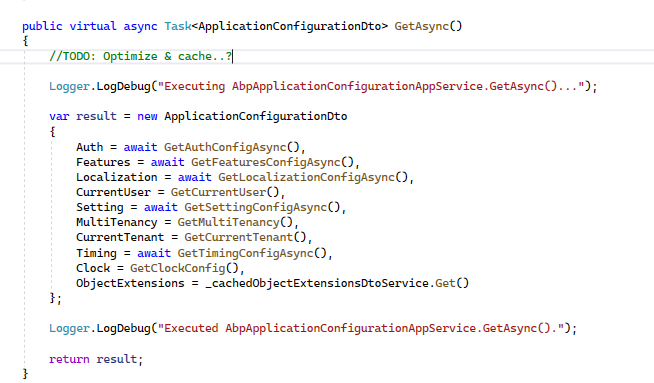Activities of "chris.tune@gmail.com"
Thanks @yekalkan
So If I'm creating a module which can be used across all types of project(angular MVC etc) I would add a migration to each type of host?
- ABP Framework version: v5.2
- UI type: Angular /
- DB provider: EF Core
- Tiered (MVC) or Identity Server Separated (Angular): yes / no
- Exception message and stack trace:
- Steps to reproduce the issue:"
I have a module solution which has all the hosts such as Unified, API host etc. I'm a bit confused as to where I add the Migrations for new entities as it mentions using unified, but If I'm using this as a module on an angular app OR other where should these be?
Cheers Chris
- ABP Framework version: v5.1
- UI type: Angular / MVC / Blazor
- DB provider: EF Core / MongoDB
- Tiered (MVC) or Identity Server Separated (Angular): Angular Microservices.
Hi I'm looking to simplify the permission and roles for our SaaS build on the commercial framework.
At the moment we seed the roles and permission when we set up a tenant. While this is good for enterprise implementation I want to reduce this down so we can offer a simple UI.
Have a static set of roles and do not allow editing of these roles or role permissions. Is there a way of hiding a role, for example, a Super User who can change all the configurations, BUT not have this visible to other users with a lower role? Removing the seeded admin user when we create a tenant and create one for the user which signed up.
For example I want to create:
- Super User (access to all features) - HIDDEN to all other users.
- Administrator (access to admin features)
- Employee (basic user)
Cheer for the advice. Chris
Can I double-check the route as well. At the moment the commercial template uses the following in the route module:
{ path: 'identity', loadChildren: () => import('@volo/abp.ng.identity').then(m => m.IdentityModule.forLazy()), },
Does this need to be changed to @abp/ng.identity ?
Great thanks for the clarification :)
Hi All
Just a bit of an update.
We were originally using version 3 then 4, where the error occurred.
We have upgraded to 5.1.3 **and we haven't had the problem since. **
But we did make other changes too... mainly due to differences in the microservices templates from version 3 to 5. We had also missed something from the upgrade guide from 3 to 4.
I would recommend upgrading if possible. If that does not work then a template comparison of the microservices template/template with your current one may help.
I think even the order of our middleware may have been a contributor.
It is time-consuming but we did resolve a lot of small issues.
- ABP Framework version: v5.1.3
- UI type: Angular
- DB provider: EF Core
- Tiered (MVC) or Identity Server Separated (Angular): yes / no
- Exception message and stack trace:
- Steps to reproduce the issue:"
Hi, I'm trying to follow the article for extending the Angular UI but I can't get it working at all. https://docs.abp.io/en/abp/latest/UI/Angular/Page-Toolbar-Extensions
It cant find the right imports and I'm wondering if the article is out of date?
Is there a current sample that shows adding a toolbar component?
Cheers Chris
- ABP Framework version: v5.1.3
- UI type: Angular
- DB provider: EF Core
- Tiered (MVC) or Identity Server Separated (Angular): yes
- Exception message and stack trace:
- Steps to reproduce the issue:"
Hi,
We are using ELSA workflows in our ABP project and the latest version of ELSA is using Automapper 11. This causes exceptions when running the abp project:
: Method not found: 'Void AutoMapper.IMemberConfigurationExpression`3.Ignore()'.
Is there a plan to upgrade the Automapper version in ABP or is there a workaround that can be used?
Thanks Chris
Hi
This is more of a design question, and I was hoping there would be some sample code?
**1. How should you look up a user in a microservice? **
For example, I want to choose a user from a list
or
I want to check some aspects of a user's details in an app service.
Currently we have a local table with users, which is synchronized through ETOs (e.g. EntityCreatedEto) We then use this local repository for our queries.
I noticed there is a UserLookupService that is used in CMS kit, but I can't seem to get this working in a microservice.
I'm not sure of the best approach.
**2. How should we add users from a microservice? **
For example, in a workflow microservice, the user has entered an email of someone to assign a task,
This user is not in the system yet so we want to invite/create user I'm assuming this is a standard inter-service communication to the identity service?
